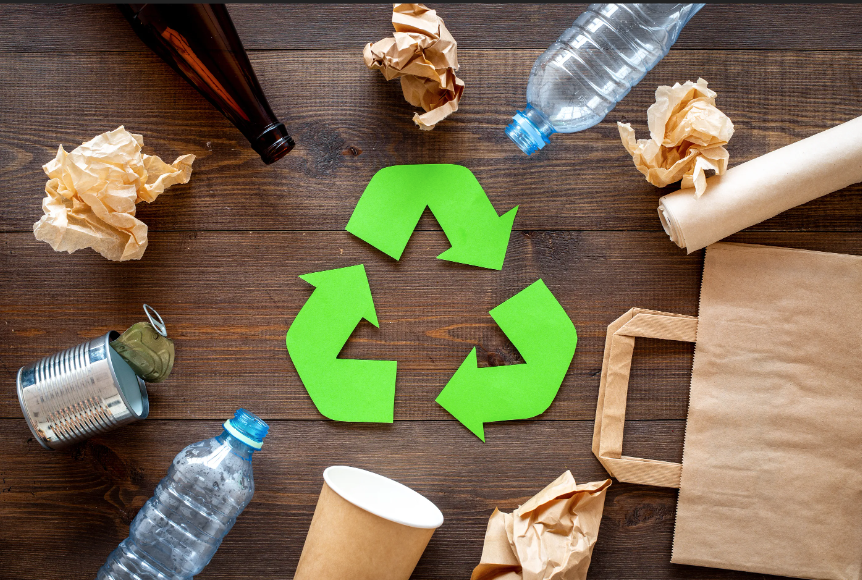How well are you recycling? Most businesses don’t know. Sure, you want your brand to be green and have set up some recycling bins here and there. But how effective are your recycling programs? Are your customers aware of your efforts?
A waste audit is a way to reveal how well you are managing your waste. But a comprehensive waste audit can cost a lot of money. These days, many don’t have the means to carry out a waste audit.
That’s why we put together this simple guide so you can do it yourself. Ultimately, a waste audit will help you figure out your waste diversion rate. That’s the percentage of waste NOT going into the landfill. Share your results with customers and show them that you’re serious about your environmental impact.
A waste audit involves collecting, measuring, and analyzing all waste for a specific length of time. An audit will determine the composition of your waste and can be done by analyzing a sample of waste produced.
To conduct a waste audit, you need to weigh all waste and recycling produced within a short and specific period of time. The recommended sampling time is anywhere between 24 to 72 hours.
Step by step instructions for a simple audit
Once you’re done, share your results with your customers. Show them that you’re serious about your environmental impact. Let’s get started!
- Select your team. A team of 3 should be sufficient for a simple waste audit. Make sure to involve the custodial team in the planning process. They can advise you of anything you will need to keep in mind and identify areas of improvement.
- Gather equipment. You will need the following: Clear garbage bags to use in all waste and recycling bins during sampling period. labels to identify date, location, and stream for each bag as they are filled (included in the Supplementary section of this package), gloves, safety glasses, safety shoe, camera, and a weigh scale (portable floor scales are the best).
- Split up facility. Identify the different sections of your facility where waste is produced. Typical sections include lunchroom, production floor, offices, retail floor, bathrooms, etc.
- Establish sampling date & time. Make sure this sampling period is representative of a typical operational period for your business. The recommended sampling time is anywhere between 24 to 72 hours.
- Collect all waste & recycling. Empty all bins before sampling period begins. As waste and recycling is accumulated, place in bags. When full, label each bag with date/time, location, and stream (waste bin vs recycling bin). Labels can be found at the bottom of this file. Keep bags separate in a secure container or in a segregated part of the facility.
- Sort & weigh. Once the sampling period is over, sort each bag based on collection location/section. Weigh each bag using the scale. Use the Supplementary section of this package to record the weight of each bag, location, and stream (waste or recycling).
- Analyze. What do you see the most in the waste stream? What areas of improvements do you see? What’s the biggest contamination issue in the recycling bin? Does one section produce more of a certain garbage than another? Are you seeing similar issues in all sections? Do a visual assessment of the contents and look for contaminants. Contaminants are anything that shouldn’t be in that stream depending on your recycling programs.
- Take pictures. Don’t forget to take pictures of your notable findings such as contaminants. Pictures are the best way to communicate in reports.
- Calculate diversion rate. Diversion rate is an easy way to determine the effectiveness of your recycling programs. Use the Supplementary section of this package to calculate your rate or use this simple formula: Weight of recycling / weight of recycling + weight of garbage X 100. Remember, the higher the diversion rate, the more effective your recycling programs.
- Communicate results. This is the most important part of the waste audit! Post your audit on the bulletin board for all to see or email out to the team for review. Sharing the waste audit results gives you the opportunity to reinforce your recycling goals and make everyone aware of what’s recyclable in your facility. Be sure to share your results with your customers. This shows them that you’re serious about your environmental impact.
Use supplementary files for your waste audit
Need help? We’d be happy to review your results and recommend the best recycling solution for your facility. Simply visit us at www.w2rsolutions.com or email us at info@w2rsolutions.com to get in touch with us.
Download the full eBook here: Business Carbon Footprint Resources | W2R Solutions.




